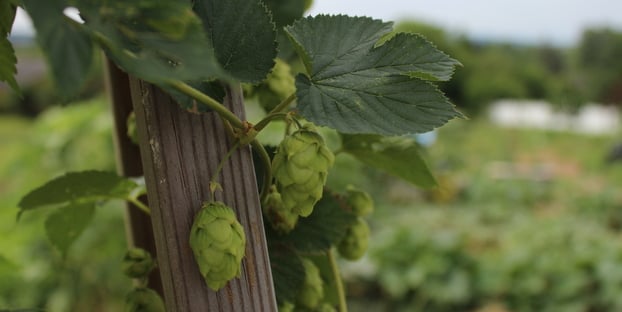
Local hop farming is starting to trend in some areas outside of the Pacific Northwest — Michigan, Wisconsin and New York to name a few. And in every example, the reason these mini-hop farms have started to take root and grow enough to benefit local craft brewers is because local governments and sometimes universities have incentivized it to happen. Hop farming, as we’ve said a bunch of times, is tough work. The equipment and setup are expensive. It takes three years before you can start to harvest — and getting a crop that is viable year in and year out can be a struggle. Unless there is a good reason to grow hops, farmers are unlikely to plant it and work to build on that acreage.
An example of this is Illinois. The craft beer scene in Chicago and Illinois is similar to many of its Midwestern neighbors in that it is crushing it. Illinois is a big agriculture state, so the Chicago Tribune took a look at the local hop scene. Is anything happening there? Maybe something approaching the 800 acres in nearby Michigan?
The Tribune found a mere 30 acres. The reasons cited are those mentioned above as there is no state or university coordinated effort to boost the effort. The hop growers there, god bless ’em, are trying to break those walls down themselves and prove the concept. The problem is with acreage that low, the volume just can’t get to a price point that entices local breweries to purchase those local hops.
From the Tribune:
“That’s the big issue. The local farmers tend to grow more popular strains (of hops) that, unfortunately, we can get cheaper elsewhere,” said Quintin Cole, co-founder of Vice District Brewing, a taproom in the South Loop.
One way around that might be for a unique, local hop to take root — a new variety that local breweries would be interested in paying a premium for.
Cole said he hopes more investment and collaboration will make it easier to buy local. If Illinois farms were to grow proprietary varieties of hops unique to the region, as some do in the Northwest, that would also present a tantalizing opportunity, Cole said, though he acknowledged developing such strains can be a lengthy process.
And some further elaboration on those costs:
Starting from scratch, a single acre of hops requires an investment of at least $10,000 to $12,000, Hauser said. Growing hops involves a trellis system and other equipment for spraying the plants and picking the hops. And though some brewers use wet hops for seasonal ales, hops usually need to be dried and turned into pellets, which also requires specialized machinery. And for small farms starting out, those costs have to be passed on to the brewer until economies of scale can be realized — unless partnerships can be formed with other hop farms to help share the cost.
The article, which you should read, goes to further explain how the hop farming scene in Michigan started to take off and how it could be a model to move the needle for more hop acreage in Illinois.






Illinois shows the challenges of growing local hop farms https://t.co/nwiuQQrDqW
Illinois shows the challenges of growing local hop farms https://t.co/hrhKknhmR5 via @craftbrewingbiz